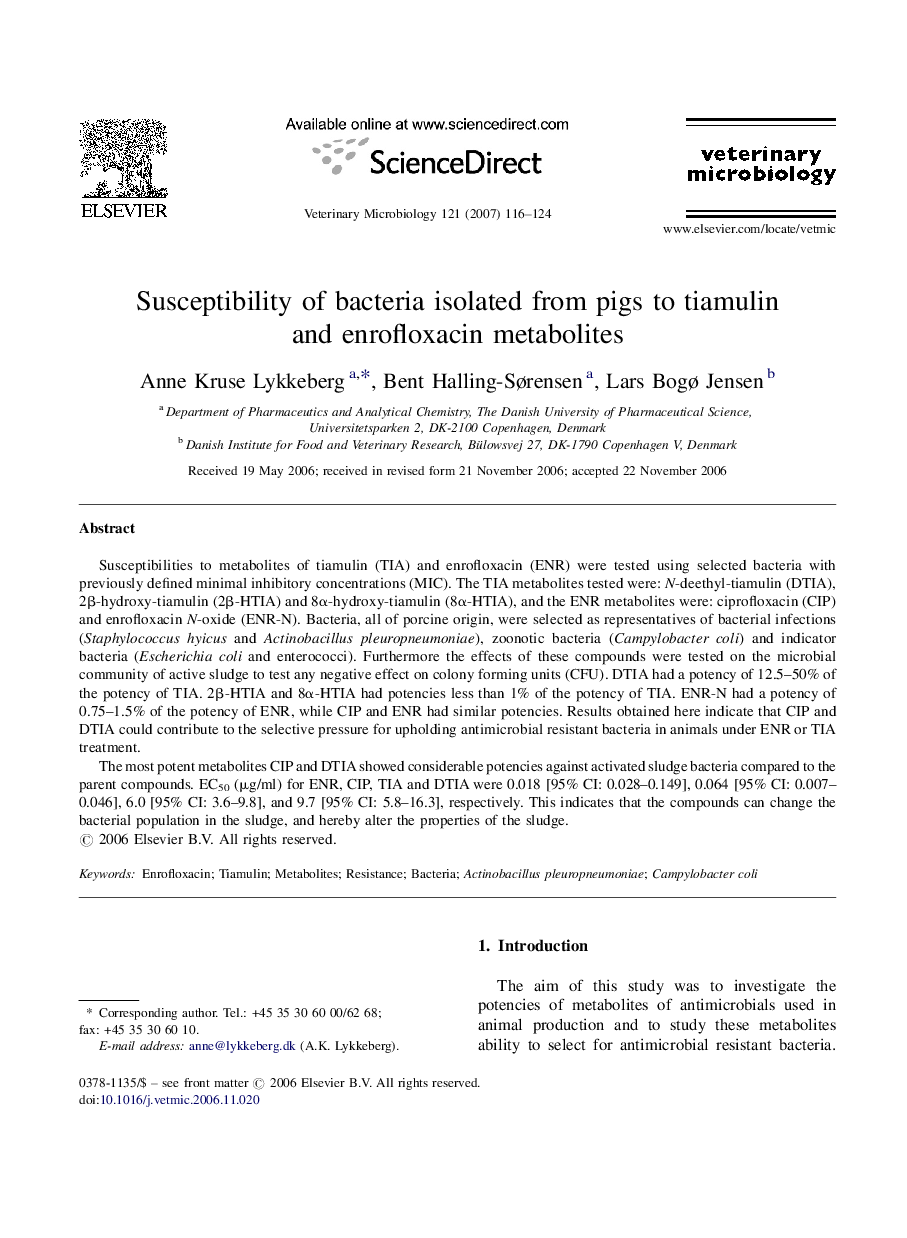| کد مقاله | کد نشریه | سال انتشار | مقاله انگلیسی | نسخه تمام متن |
|---|---|---|---|---|
| 2469285 | 1555454 | 2007 | 9 صفحه PDF | دانلود رایگان |

Susceptibilities to metabolites of tiamulin (TIA) and enrofloxacin (ENR) were tested using selected bacteria with previously defined minimal inhibitory concentrations (MIC). The TIA metabolites tested were: N-deethyl-tiamulin (DTIA), 2β-hydroxy-tiamulin (2β-HTIA) and 8α-hydroxy-tiamulin (8α-HTIA), and the ENR metabolites were: ciprofloxacin (CIP) and enrofloxacin N-oxide (ENR-N). Bacteria, all of porcine origin, were selected as representatives of bacterial infections (Staphylococcus hyicus and Actinobacillus pleuropneumoniae), zoonotic bacteria (Campylobacter coli) and indicator bacteria (Escherichia coli and enterococci). Furthermore the effects of these compounds were tested on the microbial community of active sludge to test any negative effect on colony forming units (CFU). DTIA had a potency of 12.5–50% of the potency of TIA. 2β-HTIA and 8α-HTIA had potencies less than 1% of the potency of TIA. ENR-N had a potency of 0.75–1.5% of the potency of ENR, while CIP and ENR had similar potencies. Results obtained here indicate that CIP and DTIA could contribute to the selective pressure for upholding antimicrobial resistant bacteria in animals under ENR or TIA treatment.The most potent metabolites CIP and DTIA showed considerable potencies against activated sludge bacteria compared to the parent compounds. EC50 (μg/ml) for ENR, CIP, TIA and DTIA were 0.018 [95% CI: 0.028–0.149], 0.064 [95% CI: 0.007–0.046], 6.0 [95% CI: 3.6–9.8], and 9.7 [95% CI: 5.8–16.3], respectively. This indicates that the compounds can change the bacterial population in the sludge, and hereby alter the properties of the sludge.
Journal: Veterinary Microbiology - Volume 121, Issues 1–2, 31 March 2007, Pages 116–124